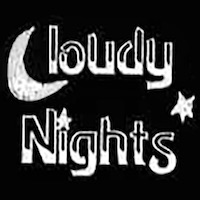Barking Dog
New member

Hi Henry,I recently borrowed a Swarovski ATX-115 to conduct a few basic tests. The PDF below was assembled from one of the three artificial star-tests I conducted (indoors and outdoors night and day). This one was done outside at about 30 meters using a glitter point of the sun reflecting from a Christmas tree ornament to make an artificial star. The center point shows the star at best focus. The left and right images show approximately the same amount of defocus in opposite directions. As usual the photos are much less clear than the views at the eyepiece (at magnifications between 70x and about 150X), particularly the left image which is affected by air turbulence more than the others.
Several aberrations are evident. Firstly, and probably the most damaging is considerable spherical aberration, which causes the right defocused image to show strong diffraction rings while the left defocused image has no rings at all combined with a bright central spot. Coma is also evident. It causes the off-center placement of the central disc in the center focused image as well the asymmetry and uneven illumination in the unfocused diffraction discs. Longitudinal chromatic aberration is pretty well corrected, but the dominant red/magenta CA in the focused image is just visible to the eye at 70x (the lowest magnification I used) and quite obvious at 120X (using the Zeiss Tripler).
Put all this together and the result is a scope with somewhat worse than diffraction limited resolution, about 1.09 arcseconds (125/D) using a USAF 1951 glass slide. Owing to the large 115mm aperture that’s actually the best raw resolution figure I’ve measured for a spotting scope, approximately the equivalent of a diffraction limited 105mm scope and frankly better than I was expecting considering the scope’s aberrations.
However, as I have observed in the past measured resolution seems to be the last thing to go in aberrated optics. The image quality at higher magnifications is already visibly compromised by the time the resolving power drops below diffraction limited. The scope I use as a reference is virtually aberration free (Astro-Physics 93mm Stowaway). Its resolution measured 1.21 arc-seconds at the same time and using the same set-up as ATX-115. Even though the Stowaway has lower raw resolution its image quality actually looks better than this particular ATX-115 because its aberrations are so much lower. At the same magnification it has a cleaner, higher contrast image quality. In comparison the Swarovski image looks like there is a layer of gauze stretched over it, something I have seen many times in scopes with aberrations high enough to prevent diffraction limited performance, which itself should be considered the floor for high quality telescope performance, not the ceiling.
Even though this particular specimen of the ATX -115 did not turn out to be a scope for which I would willingly shell out $5400 USD, I think if I could find one without the coma and with about half as much spherical aberration it could be a contender to replace the Stowaway as a lighter waterproof birding scope.
I just tested a Swarovski ATX 115mm. It delivers a resounding WOW! punch effect when first used.
It delivered a much larger and brighter image than any other scope I had previously used. The brightness perhaps due in part to its larger objective (a huge 115mm) and the large image to the fact that it starts at 30X and can reach 70X. It also appeared to deliver razor sharp images across the entire field of view while reproducing good color fidelity. Thus, I got impressed by the WOW! effect, fully enchanted, and immediately hooked.
However, after the euphoria and excitement were dissipated, I found that the level of detail shown by this 115mm scope appears to be not any better than a good 80mm - 90mm scope in the same range of magnification (30X-60X). The images may appear bigger and brighter, but, to my eyes, they do not appear to show any more detail. And truly sharp imagines end, in average, across the magnification range, at about 90% of the field of view.
The level of chromatic aberration (CA) shown by the Swarovski 115 was something unexpected; purplish and yellowish lines were clearly seen in the perimeter of images with a bright background, and the CA got even more pronounced at 70X.
A basic star test of the 115mm scope produced less than desirable results: when over focused, it showed three or four slightly ovalized concentric circles, but when under focused it just showed an elongated blob no matter the tiniest of focus adjustments made or magnification used. Could this indicate potential coma or astigmatism or spherical aberration… your guess would be better than mine.
Well, here you have it. Swarovski has a great reputation; thus, it might have been an odd 115mm unit that I tried. But in my opinion, for a Swarovski unit to perform this poorly and at this price range, is very disappointing.
Barking Dog





